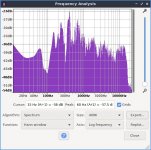My whole SP2(2004) assembly cost $200 each. 15" 1505KADT woofer, trapezoidal cabinet for better woofer dispersion, 12 db/octave crossover, tweeter protection bulb, 2" RX22 CD with 7"x14" horn. My 15" Deltapro-15A for the ugly replacement speakers I'm building were $157 each. This whole forum is covered posts about with 3 ways with a 6" or 8" "woofer". I've never heard a small speaker that sounded any good in the bass. I live in a flyover state, not a lot of inventory here. But I don't understand Mr Geddes research saying distorted bass is okay. I spent seven years in my youth learning to play a bassoon, a bass instrument. Plus 6 years of piano lessons, playing 76 of the 88 keys on some pieces. Piano teacher had a Sohmer 9' grand. Maybe my ears are more trained than Mr Geddes research subjects. I bought the 15" + CD 2 ways because they sounded better on Steinway grand piano tracks than 10"+3" I owned (KLH23) and also better than 2 10" + 3 mallory piezo tweeters that I also owned (Peavey 1210). KLH23 bought for 1 to 50 watts in my music room. Peavey 1210 bought to play keyboards in a 150 seat church with 35 w/ch amp. I use Beethoven Appassionatta CD for speaker auditions, it goes way down. Piano is very tough to reproduce correctly and easy to find a wood+steel instrument to calibrate ones ears.In other words, is a pair of $300 each woofers necessarily better than a pair of $60 each woofers if those $60 woofers already have performance someone like Jim Holtz claims is about as good as he can get. Jim claimed he didn't see the need to spend anymore, because he didn't know how to get a lot better bass.
Second the motion about buying a proper room. On white noise backed against the front wall SP2(2004) has peaks of 6 db 240 & 400 hz, trough of 6 db 100 hz & 300 hz, down only 3 db to 20 hz. Room is shape of the Wein concert hall they give the New Years Day concerts in, 4 m x 2.5 m x 11 m, with a lot of urethane foam furniture, books records, pianos organs & carpet to damp out the resonances. Above 15 khz mike rolls off, I can't hear that anyway.
Attachments
Last edited:
Ok. This one at barely €60 against this one at more than €900. The cheap driver definitely does better bass than the expensive one. And I’m afraid that the cheap one doesn’t do midrange much worse than the other. In general five times the money would give one better bass, but it’s all down to design objectives.
To me better bass means more accurate sound - Here's a quick summary of my learning/building experiences over the past 50 years to get there:
1) Active Crossovers - nothing but wire between the amp and the driver means better control/sound - Passive crossover impedances reduce driver damping, control and phase relationship or simply create a loss of accuracy. Active crossovers are more flexible - much easier to adjust for frequency and levels - easier to get right.
2) Sealed Enclosures - more accurate - less reflected waves to add/subtract sub-optimally with the main source and no port noises.
3) Acoustically isolated drivers - one driver per chamber, multiple chambers per enclosure. Every driver gets its own acoustic space so no conflict with other drivers due to manufacturing tolerances.
4) Electrically isolated drivers - one driver per amp channel. No series or parallel wired drivers. (similar reason as above)
5) Room setup - use modern tools like REW for measuring and modeling to find the best locations for speakers and subs. The improvements can be very significant.
This stuff has worked very well for me, but as always, your experiences and preferences may vary.
1) Active Crossovers - nothing but wire between the amp and the driver means better control/sound - Passive crossover impedances reduce driver damping, control and phase relationship or simply create a loss of accuracy. Active crossovers are more flexible - much easier to adjust for frequency and levels - easier to get right.
2) Sealed Enclosures - more accurate - less reflected waves to add/subtract sub-optimally with the main source and no port noises.
3) Acoustically isolated drivers - one driver per chamber, multiple chambers per enclosure. Every driver gets its own acoustic space so no conflict with other drivers due to manufacturing tolerances.
4) Electrically isolated drivers - one driver per amp channel. No series or parallel wired drivers. (similar reason as above)
5) Room setup - use modern tools like REW for measuring and modeling to find the best locations for speakers and subs. The improvements can be very significant.
This stuff has worked very well for me, but as always, your experiences and preferences may vary.
Just for the record, in my own experience the best bass I have heard actually came from pro drivers. Kappalites seem to be amazing in a 2.7 cu ft ported enclosure.
But that's s lot larger than the .6 cu ft each 8" Dayton Ref woofer needs!
But that's s lot larger than the .6 cu ft each 8" Dayton Ref woofer needs!
I created a monster ... let's try this differently.
We'll use examples ... A single 8" Dayton Reference in no larger than 1 cu ft. With .6 cu ft being optimal.
What would a person need to do or purchase, in the same limitations above, to achieve reasonably better bass quality?
Simply better 8" drivers? If so, what would make sense to spend before the point of vanishing returns?
We'll use examples ... A single 8" Dayton Reference in no larger than 1 cu ft. With .6 cu ft being optimal.
What would a person need to do or purchase, in the same limitations above, to achieve reasonably better bass quality?
Simply better 8" drivers? If so, what would make sense to spend before the point of vanishing returns?
Define 'better bass quality'. As in max SPL at certain cutoff frequency with certain distortion. Otherwise there is no such thing as better bass than from a Dayton Reference. There is such thing as misalignment. But at -say- 50Hz and 80 or even 90dB SPL on 1m, you won't find much difference between that one and some boutique 8".
The perception of better PRAT, and tone that sounds more like the original source is about the ONLY thing would make me value bass as better sounding.
And THIS is probably where the Dayton could equal expensive drivers. As long as more SPL or extension is not needed.... or so I am beginning to believe I'm being taught.
And THIS is probably where the Dayton could equal expensive drivers. As long as more SPL or extension is not needed.... or so I am beginning to believe I'm being taught.
Dipoles generally seem to be subjectively judged as producing superior sounding bass than monopole loading, except for in bass extension and impact/punch. Extension is an obvious technical weakness of dipoles for a well understood engineering reason. I’m uncertain, however, as to why bass impact/punch would be worse for dipoles. Perhaps there is some perceptual correlation between extension and impact/punch, so maybe the generally typical lack of extension from dipoles is wholly responsible for it’s perceive lack of impact/punch as well.Best bass I ever heard was Linkwitz Orions (dipoles).
https://www.linkwitzlab.com/design_of_loudspeakers.htm
‘Impact‘ and ‘punch’ quite certainly are correlated to higher bass frequencies, 70-100Hz region. Sound from the Gran Cassa as used in symphonic works ís quite low frequency and hardly ‘correlates’ to impact or punch.
‘Impact‘ and ‘punch’ quite certainly are correlated to higher bass frequencies, 70-100Hz region. Sound from the Gran Cassa as used in symphonic works ís quite low frequency and hardly ‘correlates’ to impact or punch.
Since the 70-100Hz region can be covered flat via practical dipoles, it still supports the question of why characterizations of dipole bass which I’ve read usually describes it as lacking in subjective bass ‘punch’. Which makes me then wonder whether the issue may instead be a perception of inaccurately high bass punch via monopole loading, rather than one of an inaccurately low bass punch via dipoles. As we know, an increase perceived mid/upper bass energy can easily become addictive.
It's like said first of all all room depending. And the most precise bass comes (at least for me) from sealed cabinets because of the low group delay that go low without much eq and with enough cone surface to move air without effort. So multiple woofers that are not too big. I rather have 4 10" drivers than 1 18" driver doing it as the 18". It's hard to go low with sealed drivers, but if you can it's the best. Dayton UM series and some of the RSS series subwoofers can do that very good (but are not the only ones).
The best bass i heared was in a mastering studio with very extensive acoustic treatment and 4 SB34NRX75-6 drivers in sealed cabinets spread over the room. Those cabinets were extensive braced and very well build. I don't know if those are the best drivers, but everything was right on that setup. They were used in combination with Neumann KH420 monitors and crossed arround 70Hz with a rack dsp (something like Linea or so, but i don't remember the brand) straight from the mastering daw, the dsp used Lavry Gold DA convertors trough the digital out and Bryston amplifiers. The owner asked me to check the design that someone else made for those subs (as second opinion), and to check the final result. But the dsp only does the crossover, the bass goes low in that cabinet without eq and with no help from the room (as it's an almost dead room, certainly in the lows). I was actually thinking of building those subs myself also, but my room is not treated and my neighbours won't like it...
The best bass i heared was in a mastering studio with very extensive acoustic treatment and 4 SB34NRX75-6 drivers in sealed cabinets spread over the room. Those cabinets were extensive braced and very well build. I don't know if those are the best drivers, but everything was right on that setup. They were used in combination with Neumann KH420 monitors and crossed arround 70Hz with a rack dsp (something like Linea or so, but i don't remember the brand) straight from the mastering daw, the dsp used Lavry Gold DA convertors trough the digital out and Bryston amplifiers. The owner asked me to check the design that someone else made for those subs (as second opinion), and to check the final result. But the dsp only does the crossover, the bass goes low in that cabinet without eq and with no help from the room (as it's an almost dead room, certainly in the lows). I was actually thinking of building those subs myself also, but my room is not treated and my neighbours won't like it...
FWIW, I used four of the Dayton 8" reference series woofers and two of the Dayton 10" reference series subs in the system I loosely described above in post 23. Very pleased with the results.A single 8" Dayton Reference in no larger than 1 cu ft
One answer could simply be "buy more of the same"What would a person need to do or purchase, in the same limitations above, to achieve reasonably better bass quality?
Power compression isn't an actual issue in pro drivers used at home.The "better" dynamics I think can be traced to the negative TCR wire used in the voice coil that reduces VC heating which effects the power compression. Dual VC also helps as far as power handling and reducing power compression.
Prat is a vague, meaningless made up term, most likely invented by a prat.The perception of better PRAT
Seriously? Thus my wording ... "perception of"Prat is a vague, meaningless made up term, most likely invented by a prat.
More coherent sound is better than better bass. Bass just needs to be accurate enough related to the rest of audio spectrum found on the recording and the correct mix intended by the mastering engineer could only be listened on the mastering monitors inside the recording room where the audio material was done.A system that's dead accurate is found boring and univolved by most people.I had the ocasion to listen to unreal sound quality and it was so damn boring few would believe...By nature we NEED distortions because no recording is able to deliver anything more than what microphones + compressors+FX + mixing table is getting out of it and that setup will never be truthful enough to the source as there's no real source of sound.You always listen to the ambient.Capturing the ambient is just using an FX over a dead instrument.
Last edited by a moderator:
Yes, what else you can do than buy better driver if you have limits like that? Whats the question, is it do I get better bass by buying better driver? And the answer is marginally better, but only by the SPL capability (with same or lower distortion). Any driver has low distortion when its played with low level. Some drivers might have higher distortion than others at low levels as well but the main thing is that you get more output before compression and audible distortion effects from a better driver. But you get more output by using more cone area as well so the money is probably better spent by buying more of the cheap drivers, use EQ, do what ever to make the bass actually better. More (enough) SPL capability and room modes under control and there you have it.I created a monster ... let's try this differently.
We'll use examples ... A single 8" Dayton Reference in no larger than 1 cu ft. With .6 cu ft being optimal.
What would a person need to do or purchase, in the same limitations above, to achieve reasonably better bass quality?
Simply better 8" drivers? If so, what would make sense to spend before the point of vanishing returns?
Basically this is what it all revolves around, can be read from about every post in this thread and here it is again rephrased 😀
To the dipoles lacking punch, there is quite a difference in how dipoles, compared to monopoles, excite standing waves in rooms. And their highpass function (uncorrected) is different from BR systems. So the lacking of ‘punch’ (whatever) could well be a presence of a lower end, compared to e.g. too high tuned vented systems.
Oh, and lets not forget motional feedback! Info here for example https://piratelogic.nl/?p=en.accelerometers and several threads on the subject here on diyaudio. Although this further reduces SPL capability (I think) it is a way to reduce distortion on bass without changing the system design (too much) otherwise, perhaps crossover and amplification needs to be reconsidered but the small box can stay as is or be made even smaller. Here again a big woofer excess SPL capability could be sacrificed for even less distortion though. No way around just using more volume displacement. Critical thing is to think the system design altogether to get better performance. If it is existing system the options are limited, perhaps to swapping a driver, but if one forgets the existing system and rethinks the whole thing including room a real improvement can be achieved.
edit. Klippel controlled sound is another, but I think that is geared to the clockradio market as well 🙂 https://www.klippel.de/products/klippel-controlled-sound.html
edit. Klippel controlled sound is another, but I think that is geared to the clockradio market as well 🙂 https://www.klippel.de/products/klippel-controlled-sound.html
Last edited:
Considering only distortion and whether better driver would do one could look at voice coil test bench measurements as they are probably very well controlled and thus comparable. Here are few ~6" sized driver I quickly found and two 10" in home audio category for quick view what the distortion performance seems to be. Pro woofers are tested 10db louder so not directly comparable.
https://audioxpress.com/article/test-bench-dayton-audio-rs180p-8-7-reference-series-midwoofer
https://audioxpress.com/article/test-bench-the-bwx-6502-midbass-from-misco-s-bold-north-audio-line
https://audioxpress.com/article/tes...udio-6-5-midbass-transducer-from-purifi-audio
https://audioxpress.com/article/test-bench-morel-scw-636-woofer-from-the-fat-lady-speaker
https://audioxpress.com/article/test-bench-the-seas-l19rnx1-prestige-titan-series-woofer
https://audioxpress.com/article/test-bench-wavecor-wf275bd01-10-75-home-audio-woofer
https://audioxpress.com/article/test-bench-the-l26roy-10-subwoofer-from-seas
edit. found a 15" driver tested with 94db like all above
https://audioxpress.com/article/test-bench-the-sb42fhcl75-6-15-subwoofer-from-sb-acoustics
Most of these these seem to get ~1% distortion around 50Hz while some shoot above. Unfortunately there is no data below 50Hz for most of them so..
https://audioxpress.com/article/test-bench-dayton-audio-rs180p-8-7-reference-series-midwoofer
https://audioxpress.com/article/test-bench-the-bwx-6502-midbass-from-misco-s-bold-north-audio-line
https://audioxpress.com/article/tes...udio-6-5-midbass-transducer-from-purifi-audio
https://audioxpress.com/article/test-bench-morel-scw-636-woofer-from-the-fat-lady-speaker
https://audioxpress.com/article/test-bench-the-seas-l19rnx1-prestige-titan-series-woofer
https://audioxpress.com/article/test-bench-wavecor-wf275bd01-10-75-home-audio-woofer
https://audioxpress.com/article/test-bench-the-l26roy-10-subwoofer-from-seas
edit. found a 15" driver tested with 94db like all above
https://audioxpress.com/article/test-bench-the-sb42fhcl75-6-15-subwoofer-from-sb-acoustics
Most of these these seem to get ~1% distortion around 50Hz while some shoot above. Unfortunately there is no data below 50Hz for most of them so..
Attachments
-
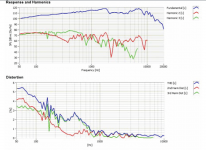 20191212202330_Figure13-Morel-SCW636Woofer.png348.8 KB · Views: 81
20191212202330_Figure13-Morel-SCW636Woofer.png348.8 KB · Views: 81 -
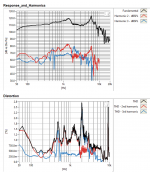 20201001201408_Figure15-SEAS-L19RNX1PrestigeTitanWoofer.png131.6 KB · Views: 71
20201001201408_Figure15-SEAS-L19RNX1PrestigeTitanWoofer.png131.6 KB · Views: 71 -
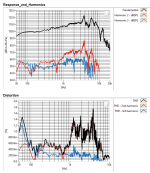 20210427202958_Figure16-BoldNorthBWX-6502Midbass.png145.7 KB · Views: 81
20210427202958_Figure16-BoldNorthBWX-6502Midbass.png145.7 KB · Views: 81 -
 20210728193633_Figure17-PurifiAudio-PTT6-5XWoofer.png143.7 KB · Views: 71
20210728193633_Figure17-PurifiAudio-PTT6-5XWoofer.png143.7 KB · Views: 71 -
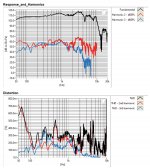 20220425223137_Figure16-Wavecor-WF275BD01-Woofer.jpg319.8 KB · Views: 77
20220425223137_Figure16-Wavecor-WF275BD01-Woofer.jpg319.8 KB · Views: 77 -
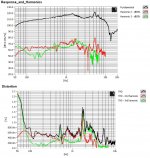 20190130194159_Figure13-DaytonAudioRS180P-8Midwoofer.jpg214.8 KB · Views: 76
20190130194159_Figure13-DaytonAudioRS180P-8Midwoofer.jpg214.8 KB · Views: 76 -
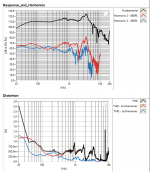 20190619194648_Figure15-SEAS-L26ROYSubwoofer.png124.3 KB · Views: 71
20190619194648_Figure15-SEAS-L26ROYSubwoofer.png124.3 KB · Views: 71 -
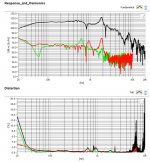 20170314162330_Figure11-SBAcoustics-SB42FHCL75-6-Subwoofer.jpg179.4 KB · Views: 78
20170314162330_Figure11-SBAcoustics-SB42FHCL75-6-Subwoofer.jpg179.4 KB · Views: 78
Last edited:
- Home
- Loudspeakers
- Multi-Way
- Better bass? How and why?
